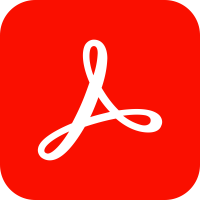Understanding Key Business Terms: A Beginner’s Guide for Entrepreneurs

Starting your first business means learning a new language. Whether you're drafting your first invoice or reviewing a lease, certain business terms will show up again and again. Understanding these early on can save you time, reduce miscommunication, and help you present yourself more confidently to investors, customers, and partners.
This guide walks you through some of the most essential business terms every new entrepreneur should know — with real-world context, links to helpful tools, and a quick-reference table to make things easy.
?? Core Terms to Know When Launching a Business
Before your first sale or pitch, you’ll encounter documents, agreements, and decisions that hinge on a shared business vocabulary. Here’s a short list of foundational terms and what they mean in practice:
-
Revenue – The total amount of money your business earns before any expenses.
-
Profit – What’s left after you subtract your expenses from your revenue.
-
Operating Expenses – The day-to-day costs of running your business, including rent, salaries, and software subscriptions.
-
Cash Flow – How money moves in and out of your business. You can be profitable and still have poor cash flow.
-
Break-Even Point – The moment your total revenue equals your total expenses.
-
Burn Rate – How fast you’re spending capital, especially relevant for startups with initial funding.
-
Liability – A debt or financial obligation (e.g., loans, unpaid invoices).
-
Assets – Things your business owns that have value (e.g., equipment, inventory, trademarks).
-
Equity – The value of an owner’s interest in a business, often referenced when raising money from investors.
?? Document Spotlight: Letters of Intent
When entering into a new relationship (whether it’s a partnership, a major client deal, or a merger), a Letter of Intent can act as a bridge before a formal agreement is signed.
An LOI outlines the basic terms both parties agree to, before drafting a binding contract. It’s useful in situations where you want to move forward, but still need time to work out the details. Businesses often use LOIs to announce partnerships, acquisitions, or new client relationships. Click to learn more about what should go in a letter of intent and how to structure one correctly.
?? Quick-Reference Table: Essential Financial Terms
|
Term |
What It Means |
Why It Matters |
|
Gross Margin |
Revenue minus cost of goods sold (COGS) |
Indicates profitability on your product or service |
|
Net Income |
Profit after all expenses, taxes, and deductions |
The true bottom line – used by lenders and investors |
|
Accounts Payable |
Money you owe vendors or suppliers |
Helps manage cash flow and avoid late fees |
|
Accounts Receivable |
Money owed to you by customers |
Signals upcoming income – but only when it’s collected |
|
EBITDA |
Earnings before interest, taxes, depreciation, amort. |
A cleaner measure of operational performance for comparisons |
For more help managing your books, tools like Bench offer bookkeeping specifically tailored for small businesses.
?? Bonus Tip: Highlighting Tools That Make This Easier
If you’re feeling overwhelmed, you're not alone. There are smart tools built specifically to support early-stage founders. For instance, Gusto helps with payroll and benefits compliance, while Square makes point-of-sale systems plug-and-play for service and retail businesses. And for those designing pitch decks or financial models, tools like LivePlan can help keep your numbers organized and presentable.
? Frequently Asked Questions (FAQ)
What’s the difference between revenue and profit?
Revenue is your total income from sales. Profit is what’s left after you deduct all expenses. If you earn $10,000 in a month but spend $7,000 on costs, your profit is $3,000.
Why is cash flow so important?
Even if your business is profitable on paper, if clients take too long to pay or you overcommit on inventory, you might not have enough cash to pay your bills. Cash flow tells you how liquid your business is.
Do I need to understand all these terms before I start?
Not all at once. But knowing the basics can help you make smarter decisions and have more productive conversations with lawyers, accountants, and potential investors.
What tools can help me track these numbers?
Many founders use platforms like QuickBooks or Wave for bookkeeping and financial tracking. These tools often include built-in dashboards that explain key terms in context.
What's an example of a real startup using these terms?
Let’s say you're launching a delivery-based coffee cart. Before you pitch to investors, you'll need to show your burn rate, gross margin, and break-even timeline. You may use a Letter of Intent to secure partnerships with office parks or co-working spaces.
?? In Summary
Business terms don’t exist to confuse you — they exist to help people work together, build trust, and measure performance clearly. Knowing the difference between revenue and cash flow or understanding how to use a letter of intent isn’t just useful — it’s how you move from “aspiring entrepreneur” to “business operator.”
Discover the vibrant community of Key Biscayne and elevate your business by joining the Key Biscayne Chamber of Commerce, where opportunities for growth and connection await!
